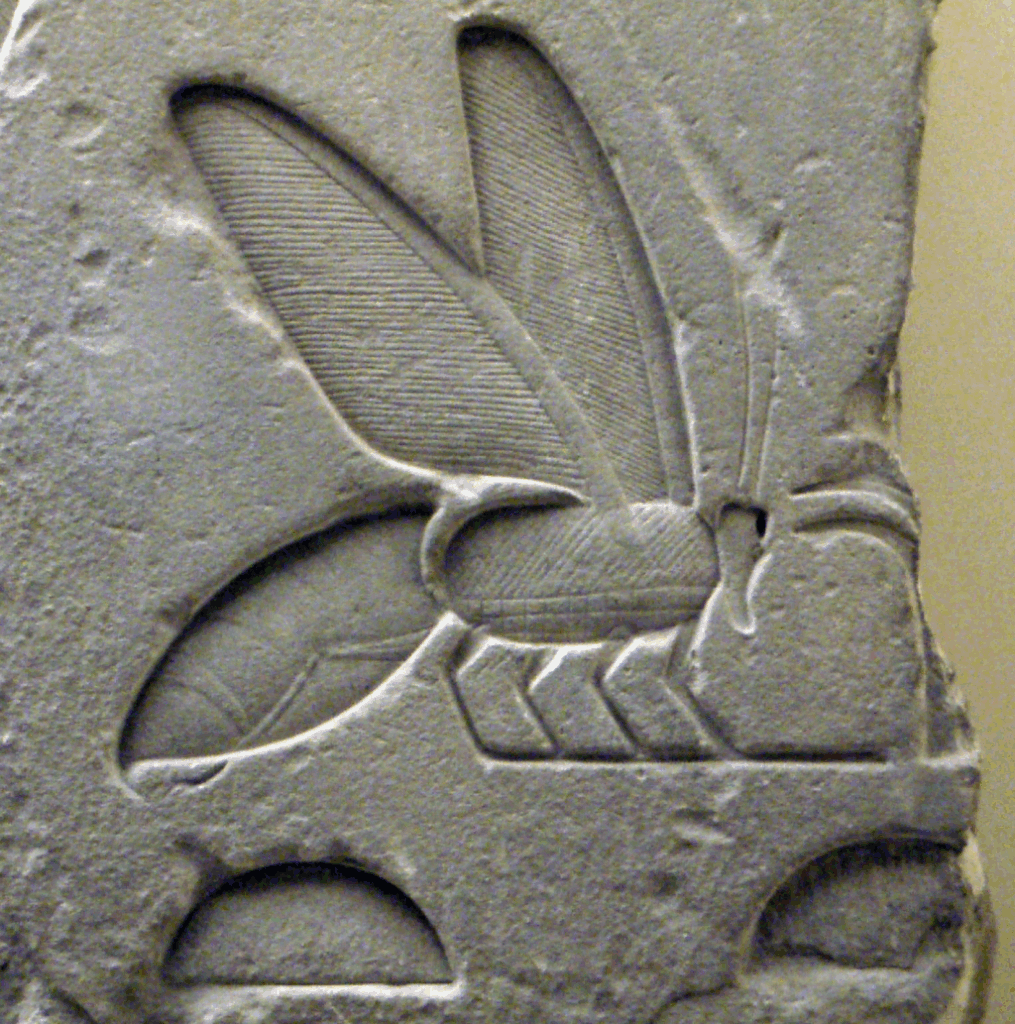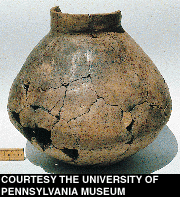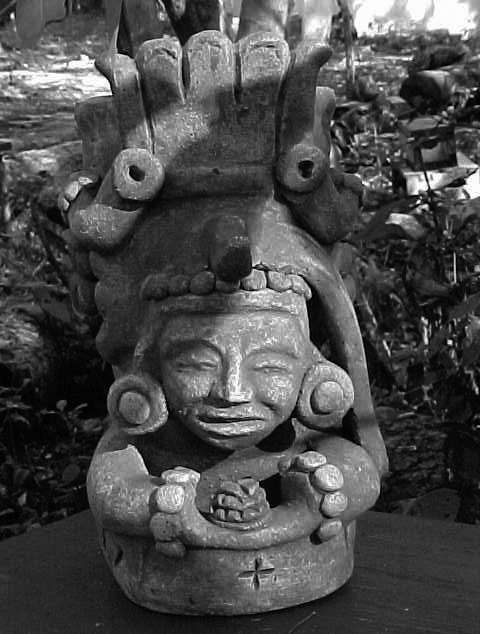History of Mead
Mead is considered one of the oldest known alcoholic drinks, with a history dating back thousands of years across many cultures, including the Vikings, ancient Greeks, Chinese, Middle East, various African peoples, and Maya civilization.
History & Culture
- Ancient Use: Evidence of mead dates to 7000 BCE in China. It was central in Norse, Celtic, and Slavic rituals and mythology.
- “Drink of the Gods”: In Norse mythology, mead was considered divine and could bestow wisdom or poetic inspiration.
- Etymology: The word “mead” comes from Old English medu, akin to Old Norse mjǫðr.
China
Mead has a very ancient and intriguing history in China, where archaeological evidence shows it may have been one of the earliest alcoholic beverages ever made, predating written records and even the widespread use of wine or beer elsewhere.

The Oldest Known Mead: Jiahu, China (~7000 BCE)📍 Site: Jiahu (Henan Province, central China)🧪 Discovery: Chemical analysis of pottery jars (excavated in the 1980s–1990s)📆 Date: Around 7000 BCE (Neolithic period)🔬 Contents Identified: Biochemical residue analysis (conducted by Patrick McGovern and colleagues) showed a mixed fermented beverage made from:Honey (source of sugar → mead-like)
Rice (starch source → beer-like)
Hawthorn fruit and/or wild grape (tannin/acid source → wine-like)
This mixture is considered the earliest chemically confirmed alcoholic beverage in the world.Source:McGovern, P.E. et al. (2004). Fermented beverages of pre- and proto-historic China, PNAS
Book: Ancient Wine: The Search for the Origins of Viniculture by Patrick E. McGovern
While later Chinese dynasties (like Shang and Zhou) favored millet or rice wines (jiu, 酒), it’s likely that honey-based or mixed fermented beverages were:
- Used in early ancestor worship rituals
- Consumed during communal feasts and ceremonial events
- Offered to deities or spirits
Though mead isn’t frequently mentioned in ancient Chinese literature by name, terms like “mi jiu” (蜜酒, honey wine) appear sporadically in early texts.
Around 2000–1000 BCE, as Chinese fermentation methods advanced, rice, millet, sorghum, and wheat wines (like huangjiu, later baijiu) became dominant. Honey became more medicinal or culinary, rather than used for alcohol, but Mead survived more in folk or monastic traditions than elite culture, such as Taoist alchemical elixirs and traditional medicine as warm honeyed tonics (especially mixed with herbs).
Today, mead is experiencing a slow revival in some urban craft beverage circles and among traditional medicine enthusiasts. Chinese meaderies are few but growing.
Africa
The history of mead in Africa is ancient, rich, and ongoing—making it one of the most enduring centers of mead-making in the world. Honey wine has been produced across the continent for thousands of years, especially in East Africa, where it continues to play cultural, spiritual, and social roles today. Mead is still made and consumed traditionally in Ethiopia, Kenya, Tanzania, and parts of West Africa.
- Africa may be the original birthplace of mead, or at least one of its oldest cultural centers. Africa has the world’s oldest evidence of mead production.
- African meads are wild, unfiltered, herbal, and reflect intimate connections to land and ancestry. African meads are often wild-fermented, using local herbs, bark, and spontaneous yeast.
| EVIDENCE OF EARLY AFRICAN MEAD Begemeder, Ethiopia (~1st millennium BCE) Indigenous African groups—especially forest-dwelling communities—have practiced honey hunting and beekeeping for millennia.Excavations found ceramic vessels and tools related to honey fermentation.Ethnographic and archaeological records show fermentation of honey using: –Clay jars –Tree bark or roots for yeast and bitterness –Ambient temperatures for fermentation |
🇪🇹 ETHIOPIA: THE HEARTLAND OF AFRICAN MEAD
Tej (ጠጅ) – Traditional Ethiopian Honey Wine is deeply integrated into community and spirituality.
- Made from: Raw honey, water, and ‘gesho’ leaves or bark (Rhamnus prinoides), a bittering/shadow-fermentation agent (like hops). Wild fermentation—no commercial yeast used.
- Cultural & Religious Role. Associated with Orthodox Christian holidays, saints’ days, and spiritual hospitality. Drunk during festivals, weddings, religious holidays, and in tej houses (tej bets).
- Part of the Ethiopian identity, even mentioned in imperial chronicles and religious poetry. “Tej” is referenced in medieval Ethiopian texts, including the Kebra Nagast (“Glory of the Kings”), a 14th-century work linking Ethiopia’s rulers to the biblical Solomon.
🇰🇪 Kenya (Kikuyu, Maasai, Kalenjin)- Mead called “kiambiro,” “honey beer,” or “muratina” in some ethnic groups. Made with honey, water, and herbs (like fermented fruit from the sausage tree or muratina tree). Used in initiation rites, weddings, and elder councils.
🇹🇿 Tanzania (Chaga, Pare, Maasai)- Fermented honey drinks used in rituals and ancestor offerings. Drunk communally, tied to livestock celebrations and seasonal events.
🇳🇬 Nigeria (Yoruba and Igbo)- Fermented honey or palm-based drinks occasionally enriched with honey. Used in libations to gods (orishas) and ancestral rites.
🇿🇦 South Africa (Khoisan and Xhosa)- Honey and roots used to ferment ritual tonics—not always called mead but similar in concept. Seen as a way to commune with the spirit world.
Egypt
Mead in ancient Egypt has a more limited but still significant historical presence, mostly inferred through texts, religious associations, and symbolic uses of honey. While beer and wine dominated Egyptian alcoholic culture, mead—or honey wine—was known, especially in early dynastic and priestly contexts.
While there is no direct chemical evidence (like in Jiahu, China) has been found in Egyptian pottery specifically confirming mead, but there are strong textual and contextual clues:
- Honey was widely used and revered.
- Fermentation was well understood (beer and wine were common).
- References to fermented honey drinks appear in both religious texts and medical papyri.

In ancient Egypt, honey was a symbol of rebirth and purity, offered to gods and the dead, and used in medicine, food, embalming, and rituals. Honey was so valuable that it was used as currency. It was collected in temple beehives and reserved for the pharaoh, priests, and elite. Given this reverence and the presence of fermentation, it’s plausible that fermented honey (mead) was known and used, though not widely consumed like beer.
- Temple Texts and Rituals. In Hellenistic-period temple texts (Ptolemaic era), ritual offerings include drinks called “honey-beer” or “sweet beer”, which might have referred to mead or mead-beer hybrids.
- Myth of Hathor-Sekhmet. In the Destruction of Mankind myth (recorded on the walls of the Temple of Dendera), the goddess Sekhmet is pacified after a murderous rampage by drinking red beer mixed with honey, which some scholars interpret as a form of ritual mead. This blend was made to resemble blood, fermented, and offered to the goddess. This is perhaps the clearest mythological example of a honey-based ritual drink in ancient Egyptian tradition.
- Ebers Papyrus (~1550 BCE). Contains numerous recipes combining honey with herbs and other liquids for healing purposes. While not mead per se, it shows how fermented honey mixtures were understood and used medicinally.
| Timeline Summary | |
| Period | Mead-Related Developments |
| Old Kingdom (~2600 BCE) | Honey as sacred and medicinal, possible early fermented uses |
| Middle Kingdom | Ritual and funerary honey offerings; no clear mead evidence |
| New Kingdom (~1500 BCE) | Red honey-beer in Sekhmet pacification ritual (myth) |
| Ptolemaic Period | Temple recipes mention sweet/honey beers |
| Roman Egypt | Mead-like drinks likely persisted in temples and homes |
Middle East
The Middle East—cradle of early civilization—has a long history of fermented beverages, including mead. While grape wine and beer were more dominant, mead (fermented honey drink) was known and used, particularly in early Mesopotamian and Anatolian cultures. Its role evolved over time due to climate, religious shifts, and the development of other fermentation methods.
- Sumer and Akkad (~3000–2000 BCE). Sumerian cuneiform tablets refer to “kuš sig” (possibly honey-wine or honey-beer), though not definitively identified as mead. Honey appears in offering lists, especially to gods like Inanna, indicating its ritual importance. Fermented drinks made from honey may have been rare but used ceremonially.
- Hittite Anatolia (~1600–1200 BCE). In central Anatolia, Hittite texts from cuneiform tablets mention “wiyan šarri” and “šarpi” (royal wine or honey drink). A ritual involving honey-wine was described for oaths and divine offerings. Honey-based drinks were clearly used in sacred and political ceremonies.
- Hajji Firuz Tepe (Iran, ~5400–5000 BCE). Pottery jars from this Neolithic village showed chemical traces of honey, rice, grapes, and hawthorn berries—likely a mixed fermented drink, possibly a proto-mead or mead-fruit hybrid. This is one of the earliest known chemically-confirmed fermented beverages, predating pure wine.

- Classical Persia (Achaemenid to Sasanian, 550 BCE–651 CE). The Persians favored wine and fruit-based drinks, but honey wine was known and consumed by the elite. Texts mention honey in medical, poetic, and culinary contexts. Mead may have been a luxury or medicinal beverage, not widely available.
- Islamic Golden Age (~700–1300 CE). After the spread of Islam, alcohol was officially prohibited—but Mead remained in medical recipes (as nabīdh, a fermented drink, sometimes made from honey). Alcohol use persisted among certain courts, intellectuals, and poets, especially in Persia and Al-Andalus.
- Avicenna (Ibn Sina) in The Canon of Medicine referenced fermented honey mixtures as tonics.
Greece
In ancient Greece, mead (melíkraton or hydromeli) was known and consumed, though it was eventually overshadowed by wine, which became the dominant drink in Hellenic culture. Still, mead holds an important place in early Greek mythology, medicine, and poetic tradition.
| Greek Terms for MeadΜελίκρατον (melíkraton): A mixture of honey (meli) and water (kratos); sometimes used as a sweet drink or a nourishing tonic for children. Ὑδρόμελι (hydromeli): Literally “honey-water,” this term refers to a fermented or non-fermented beverage made from honey and water — essentially mead.Aristotle (384–322 BCE)- Meteorologica. “The so-called ‘hydromeli’ forms naturally when rainwater collects in hollow trees and mixes with the honey left by bees. When it ferments in the warmth, it becomes like wine in potency.” |
- Hippocratic Medicine. Hippocrates (c. 460–370 BCE), the father of Western medicine, referenced hydromeli as a medicinal tonic, used for treating fevers, easing digestion, and post-surgery nourishment.
- Hippocrates – On Regimen in Acute Diseases (5th century BCE). This early medical text recommends hydromeli as a restorative drink — cooling, hydrating, and nourishing. Mead, whether fermented or not, was used to soothe illness or aid recovery.
Greek (simplified):
“τοῖς δὲ ἐν πόνῳ καὶ θερμοῖς σῶμασιν ὕδωρ καὶ μέλι μίγνυται.”
Translation:
“For those in pain or with overheated bodies, water mixed with honey is given.”
- Orphic and Dionysian Traditions. The Orphic Mysteries — mystical religious rites — sometimes referenced mead-like drinks as ritual libations before wine became prominent. Mead was associated with a primordial era of purity, predating the cultivation of wine grapes and linked to golden-age myths.
- Pre-Dionysian Libations. Before Dionysus became the primary deity associated with wine, older Indo-European cultures likely honored gods with mead or honey-based drinks, a practice retained in some Hellenic ritual contexts.
While early Greeks valued mead, by the Classical period, wine became culturally dominant in wine cults like those of Dionysus gained popularity. As vineyards spread across the Mediterranean, Mead became associated more with barbarian or older traditions (a similar trajectory occurred in Rome). However, mead never disappeared entirely—it remained part of folk medicine and rural customs, especially in mountainous or bee-keeping regions of Greece.
Norse Culture
Mead held a central place in Norse culture, mythology, and daily life. It wasn’t just a drink—it was divine, poetic, and powerful, associated with gods, warriors, and the afterlife. Consumed widely from the Bronze Age through the Viking Age (ca. 1500 BCE–1100 CE). The word “mead” comes from Old English medu, akin to Old Norse mjǫðr. A fermented drink made from honey, water, and sometimes herbs or fruit. Herbs like meadowsweet, bog myrtle, and spices were often added (similar to gruit).
- Archaeological Evidence. Residue analysis from drinking horns and pottery in Viking graves (Denmark, Sweden, and England) shows traces of Honey, Hops, herbs, and berries. Some show mixed fermentation (with barley or fruit).
- The Mead of Poetry (Skáldskaparmjöðr). One of the most famous Norse myths involving mead explains how poetry and wisdom came to humankind:
- After a war between the gods, a peace treaty was sealed with saliva from all the gods, creating a being named Kvasir, full of knowledge. Kvasir was killed by dwarves, who mixed his blood with honey—creating the Mead of Poetry. Whoever drinks it gains divine poetic skill, wisdom, and eloquence. The mead is stolen by Odin, who tricks a giantess and drinks it all. He returns to Asgard, spitting it into vats and giving it to worthy poets. The dregs he spilled were said to inspire bad poets.
- Mead and the Afterlife. In Valhalla, fallen warriors were said to drink mead from the udders of the goat Heiðrún, who fed on the leaves of the world tree Yggdrasil. Mead was the drink of the Einherjar—the heroic dead preparing for Ragnarök.
- Social and Ceremonial Use. Mead was served during feasts, weddings, and rituals. It symbolized hospitality, status, and the binding of oaths. Important during Yule and sacrifices (blóts) to gods like Odin, Thor, and Freyr.
- Brúðhlaup (Norse Wedding Mead). The origin of the term “honeymoon” comes from a Norse tradition:
- A newlywed couple would drink mead daily for one moon cycle (about 30 days) after their wedding. Mead was believed to promote fertility and ensure a strong union.
Maya Civilization

The Maya civilization of Mesoamerica had a rich tradition of fermented beverages, and while mead as we know it wasn’t their primary alcohol, the Maya did produce and use a honey-based fermented drink called balché. Balché is a fermented ritual drink made by the ancient Maya, and it’s still consumed by some Maya communities today. The bark of the balché tree adds mild bitterness and tannins, giving balché a flavor profile more complex than simple mead.
- Ritual and Religious Use. Balché was consumed in ceremonies honoring gods, ancestors, and during festivals. It was associated with hallucinogenic or entheogenic practices when combined with other plant extracts. Priests and shamans used balché to induce trance-like states.
- Beekeeping and Sacred Honey. The Maya domesticated stingless bees (Melipona beecheii), seen as sacred creatures.Ah-Muzen-Cab was the Maya god of bees and honey, often invoked in relation to honey collection and fermentation. Honey was a symbol of:
- Divine favor
- Fertility and sweetness of life
- Used as tribute, medicine, and in burials
| Balché The process mirrors mead-making, though flavored by regional flora and spiritual customs. Traditional Ingredients:Honey (from stingless bees like Melipona beecheii) Water Bark from the balché tree (Lonchocarpus longistylus) Sometimes additional herbs or rootsFermentation occurred naturally over a few days. Some balché was consumed mildly fermented, while other batches were stronger and left to age longer. |
Spanish colonizers banned balché and bee rituals, viewing them as pagan. Also, stingless beekeeping declined sharply due to European bee introduction and cultural suppression. Despite this, balché survived underground and still exists today in parts of Yucatán and Guatemala.
🧭 Timeline Overview
| Period | Mead/Balché Developments |
| Preclassic Maya (~1000 BCE) | Likely early use of fermented honey drinks and beekeeping |
| Classic Maya (250–900 CE) | Widespread use of balché in rituals, symbolic bee culture |
| Postclassic (900–1500 CE) | Continued sacred role; trade of honey as currency |
| Spanish Conquest (16th c.) | Suppression of balché and bee rites |
| Modern Era | Balché survives in traditional rural communities |